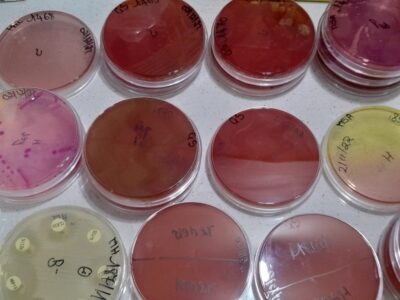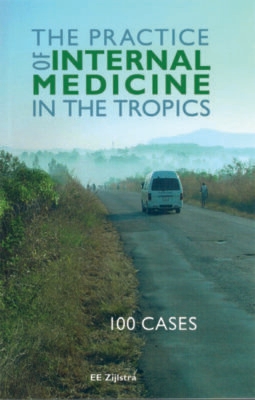Main content
Many refugees originate from conflict areas where violence prevails. Detention, torture and violations of human rights cause a lot of suffering and make people flee their country. The violence and other traumatic experiences often result in both physical and mental problems. Medical doctors and other health care professionals have to deal with the special needs of this group.
Case
A man from Syria has recently arrived in a city. He consults the family doctor for his painful shoulders. On examination the doctor finds all movements of both shoulders impaired. The man gets painkillers for his pain. Upon the next appointment there is no improvement and he then complains about difficulties with sleeping. He recounts that he is always thinking about his country and his family and friends who are still there. Only during the following consultations he starts to unveil bit by bit his torture experiences. How he was beaten everywhere and was hanged with his arm pulled behind his back. How he suffers from shoulder pains and recurring nightmares about his torture experiences.
Introduction
Most of those who flee their country find (temporary) refuge in neighbouring countries. Only a minority applies for asylum in Europe. In 2014 around 400,000 persons applied for asylum in the EU. Some 24,000 (6%) arrived in the Netherlands. Of this group more than 40% are Syrian asylum seekers. If a person requests asylum based on the United Nations Refugee Convention he is called an asylum seeker. When the asylum request is approved he gets a residence permit and is called refugee, which entitles him to getting a house in a municipality. This is usually the starting point to learn the language and to integrate in society.
An epidemiological study among asylum seekers and refugees in the Netherlands (from Afghanistan, Iran and Somalia) shows a high prevalence of both physical and psychological problems [2]. Half of the refugees expresses chronic pain. Despite the many psychological symptoms there is relatively little use of mental health care. Follow-up research 7 years later shows that the high prevalence of posttraumatic stress disorder (PTSD) persists in this group despite an improvement of experienced health in the period after receiving the residence permit [3].
Torture
Despite international treaties and conventions torture takes place worldwide and on a massive scale. Between 2009 and 2013 Amnesty International received reports of torture and other ill treatment committed by state officials in 141 countries, and from every world region [4].
An overview of torture methods can be found in the Istanbul Protocol [5]. This United Nations manual on the effective investigation and documentation of torture and other cruel, inhuman or degrading treatment or punishment was developed by legal and medical human rights organizations [6].
Since the torture I have pain everywhere…
Some common methods of physical torture are: [5]
- Blunt trauma: hitting, whipping, clubbing, kicking, (with fists, clubs, rifles), falanga (beating of the soles of the feet)
- Sharp trauma: stab, cut (with knife, razor)
- Burning: use of hot material (iron, burning plastic, cigarettes), acids, hot spices in eyes or anus
- Crushing: standing on hands or feet, hammering, fingers between clamp or vice
- Positional torture: suspension on arms or legs, forced positions
- Electric shocks: mostly on fingers, toes, nipples and genitals
- Asphyxiation: keeping head under water (waterboarding), plastic bag around head
- Sexual torture: rape, direct trauma to genitals, objects in vagina or anus
Physical sequelae and symptoms
Some torture methods give specific physical sequelae [7]. Some examples:
- Scars are seen very often in all kinds of forms.
- Sequelae to the head are common. Victims of torture often report that they have been beaten on the head and that they have been unconscious. This can lead to brain damage. There may also be damage to the teeth or perforation of the eardrum caused by blows to the ear.
- Fractures can result from violent blows or crushes. Inadequate care can result in a bone infection or healing with malfusion and disability. Joint damage can occur from twisting and overstretching, like shoulder pain and impairment after hanging on arms.
- Nerve damage can occur by injuries because of tight cuffs at wrists or ankles but also by overstretching. Suspension with the arms behind the back can lead to shoulder capsule and also to brachial plexus damage, which might lead to a winged scapula (scapula alata).
- Damage of the genitals or anus by rape, electric shocks or bleeding. Testicular atrophy can result from beating the genitals.
- There are torture methods that give no physical sequelae. This is the case, for example, when administering electric shocks, near-suffocation and sexual violence. The absence of scars does not mean that no torture has taken place.
Depending on the specific aspects of a scar or medical finding it can support a story of torture and this can be used as proof in an asylum request.[8]
Psychological effects
The overall purpose of torture is breaking a person mentally through physical violence and fear of dying. Psychological symptoms often feature prominently.
There is a lot of scientific research into the psychological consequences of torture. These consequences can be severe, long-lasting and disabling with high prevalence rates of PTSD and depression. Common symptoms are intrusive recollections of traumatic events in thoughts, flashbacks and severe anxiety and distress when exposed to cues that provoke memories of the trauma. At the same time there is a tendency to avoid feelings and activities that provoke these memories, resulting in little social engagement. These symptoms are accompanied by an increased arousal with sleep difficulties, anger, and cognitive problems with concentrating and memory. Alcohol or drugs can be used as a way of self medication.
Pain
Tortured refugees often relate their physical symptoms, mostly pain, to these torture experiences. It is good to realize that for most torture victims the body was their weakest part, it made them suffer and they have doubts about the damage created by the torture. Pain and traumatization can reinforce each other.[11] It also leads to a different evaluation of threat and of painful stimuli. Pain may also remind the person of the traumatic experiences and thus lead to increased vigilance. The avoidance component of a PTSD leads to inactivity which also contributes to pain. The increased anxiety strengthens the perception and experience of pain. And some somatic symptoms can be physical expressions of anxiety like palpitations, tremor, nausea, dyspnoea. These somatic symptoms are, more than psychological symptoms, a reason to consult a physician.
Treatment
Refugees will often not express their torture experiences clearly to the physician. To be able to understand the context of some complaints it is useful to know more about the life story of a refugee. Asking for a history of torture can help to disclose, certainly in case of unexplained pains. They often feel ashamed to talk about these painful experiences. Realize that pain can be felt in parts of the body where someone was beaten, with or without visible scars or after-effects [12]. Conducting a physical examination helps to detect sequelae of torture and it creates confidence because the refugee feels being taken seriously. Exercises and physiotherapy help to diminish the tendency to immobilize. The mental aftereffects need a combination of psychotherapy, medication and social activation. Normal treatment guidelines should be followed by special attention to some specific elements like: the torture background of pain; the desire of being recognized and understood as a victim; cultural ideas about health and care. [13]
For the physical aftereffects of torture there are no specific treatment centres to refer to and specific treatment has to be found in the regional and university clinics. For the mental problems there are some mental health institutes specialized in refugee mental health.[14]
Conclusion
After returning to the Netherlands doctors in tropical medicine keep an interest in working for patients of different cultural backgrounds. Regularly, family practitioners in reception centres for asylum seekers or in low- income neighbourhoods have a background in tropical medicine. As the number of inhabitants with a refugee background rises refugee health care should be part of the curriculum of medical students and the training of family practitioners and specialists.
Physicians should be aware of the history of torture and violence in asylum seekers and refugees. Often the torture and the forced migration is a rupture in the life of refugees as they lose home, family and job. Physical and psychological symptoms can directly or indirectly refer to this cause. Addressing the possibility of torture experiences can be useful for a doctor as a starting point to help a refugee to overcome these traumatic experiences. Taking time to gain confidence and to give recognition are central focus points next to physical examination and asking questions about experiences in the past. And it is important to keep in mind that there is a lot of resilience in asylum seekers and refugees. [15] And also: physicians can empower them.
References
- Figures Immigration and Naturalisation Department, www.ind.nl or direct link https://ind.nl/Documents/Februari%20definitief.pdf (last accessed 14-4-2015).
- Gerritsen AAM, Bramsen I, Devillé W et al., Physical and mental health of Afghan, Iranian and Somali asylum seekers and refugees living in the Netherlands. Soc Psychiatry Psychiatr Epidemiol 2006,41(1):18-26.
- Lamkaddem M, Stronks K, Devillé WD, et al., Course of post-traumatic stress disorder and health care utilisation among resettled refugees in the Netherlands. BMC Psychiatry 2014,14:90.
- Amnesty International. Torture in 2014. 30 years of broken promises. London: Amnesty International. http://www.amnestyusa.org/sites/default/files/act400042014en.pdf (last accessed 14-4-2015).
- United Nations High Commissioner for Human Rights. Istanbul protocol. Manual on the effective investigation and documentation of torture and other cruel, inhuman or degrading treatment or punishment. New York/Geneva: United Nations, 2004. http://www.ohchr.org/Documents/Publications/training8Revien.pdf (last accessed 14-4-2015).
- Iacopino V, Ozkalipci O, Schlar C, The Istanbul Protocol: International Standards for the Effective Investigation and Documentation of Torture and Ill-treatment. Lancet. 1999;354(9184):1117.
- Peel M & Iacopino V. The medical documentation of torture. London/San Francisco: Greenwich Medical Media, 2002.
- Bloemen E, Keunen A. “Ik heb alle bewijzen op mijn lichaam”. De eerste ervaringen na anderhalf jaar iMMO. Asiel- en Migranten Recht 2013,9:454-60.
- Fazel M, Wheeler J, Danesh J, Prevalence of serious mental disorders in 7000 refugees resettled in western countries; a systematic review. Lancet 2005,365(9467): 1309-14.
- Gerrity E, Keane MT, Tuma F (ed.). The Mental Health Consequences of Torture. New York: Kluwer Academic, 2001.
- Rohlof HG, Knipscheer JW, Kleber RJ, Somatization in refugees: a review. Soc Psychiatry Pschiatr Epidemiol 2014,49(11):1793-804.
- Williams AC, de Pena CP, Rice ASC, Persistent Pain in survivors of torture: a cohort study. Journal of Pain and Symptom Management 2010,40(5):715-22.
- Bloemen E, van der Laan J, Huisarts en vluchteling. Practicum huisartsgeneeskunde. Amsterdam: Reed Business, 2012.
- Centrum 45, Diemen/Oegstgeest; GGZ Drenthe, De Evenaar, Beilen; GGZ Reinier van Arkel, Psychotrauma Centrum Zuid Nederland, Den Bosch; Mediant, Centrum voor Psychotrauma, Enschede; GGZ Pro Persona, afdeling Phoenix, Wolfheze.
- Hutchinson M, Dorsett P, What does the literature say about resilience in refugee people? Implications for practice. J of Soc Inclusion 2012,3(2):55-78.



















































